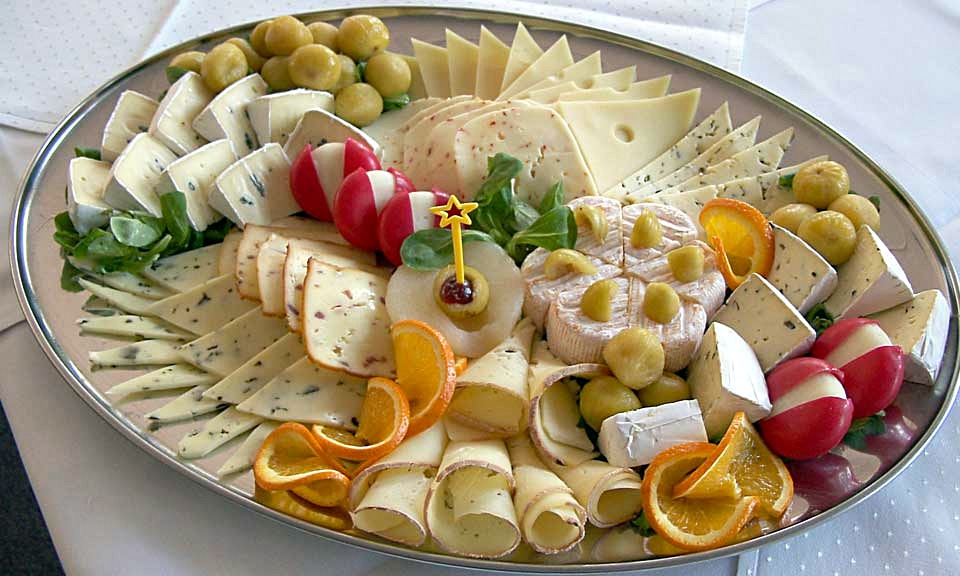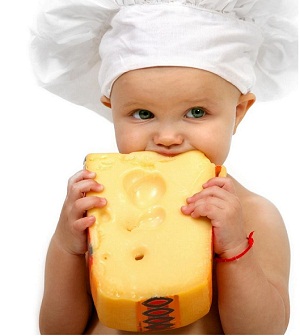Cheese – A complex food made from a few simple ingredients
Cheese and Healthy eating – What is cheese ? Varieties of cheese ..
Cheese’s immense popularity stems from its taste, versatility, many varieties and nutritional package.
All cheese is made from milk, but different manufacturing and aging processes are used to produce the array of cheeses available today.Cheese is made by coagulating or curdling milk, stirring and heating the curd, draining off the whey (the watery part of milk), collecting and pressing the curd,and in some cases, ripening. More than 400 different varieties of cheese are available. Cheeses are categorized in several ways:
- Natural Cheeses. These cheeses can be unripened or ripened.
- Unripened cheeses are made by coagulating milk proteins (casein) with acid. Examples include soft cheeses like cream cheese, cottage cheese and Neufchatel.
- Ripened cheeses are made by coagulating milk proteins with enzymes (rennet) and culture acids. These cheeses are then ripened (aged) by bacteria or mold.
- Natural cheeses are often categorized according to their moisture or degree of softness or hardness: Fresh , Soft ,Semi-hard ,Hard, Blue-veined ,Double or triple crème ,Paste (spun paste)
Cheese quality depends on Type of milk is used ? Country of origin and aging
Quality of the milk : The quality of the milk used in its making has a direct effect omits outcome cow’s milk yields a creamy, light and sweet taste while goat’s milk is less fatter and the cheese has a soft texture and an aroma. On the other hand, the cheese made of sheep’s milk is richer and fatter.
Aging : Cheeses are usually aged in a temperature controlled environment for different time periods to allow the moisture to escape and make it more intense in taste. The bacteria in it convert the texture to enhance flavour.
Country of origin : More than 400 different varieties of cheese are available. For eg France is said to have over 700 distinct cheeses
Cheese popular varieties,characteristics and uses
Cheddar – An all-time classic
The firm smoothy body cheese is mild or sharp and colour ranges from white to orange ,varied shapes and styles
Uses : Tacos •Chili •Salads •Soup•Omelets •Casseroles •Snacks•Sandwiches •Dessert with fruit or atop hot apple pie
Romano /Parmesan – slightly hard and made from unpasteurised cow’s milk
Uses : It is grated over pastas and soups and used in risottos.
Feta – Soft; flaky white interior; salty “pickled” flavor
Uses :On salads and spinach omelets •Add to lasagna and vegetable casseroles •Accompany citrus fruits
Gouda & Edam – Semi-soft to firm; creamy with small holes; light yellow; mild, nutlike
Uses : Snacks with fruit •Grilled Sandwiches •Casseroles •Picnic snack
Brie : Soft; thin white edible crust, creamy interior; slightly firm and mild when young, creamy and pungent when aged
Uses : Bake in puff pastry •Bake with butter, garlic, almonds •Serve with fruit for dessert •Split and fill with walnut filling
Blue : Semi-soft; blue-green mold marbled or streaked interior; sometimes crumbly; sharp, spicy flavor
Uses : Dips •Dressings •Crumble over fruit or vegetable salads •Stuffed chicken breast or beef fillet •Dessert
Goat cheese: Soft, zesty goat’s cheese (called Chevre in French), can be eaten unripened or hard. The textures range from gooey and moist to semi-firm and it is not as salty as feta. This cheese is then made into small logs.
Cooking with Cheese
Some cheeses do better when exposed to heat than others. In general though, use low heat or just enough to melt the cheese and blend with other ingredients. High heat or long cooking times cause cheese to become tough and stringy.
Shred, grate, cube, or dice cheese to ensure even melting. When broiling cheese, heat less than five inches from the broiler until the cheese just melts. Add cheese toppings during the last five to ten minutes of the baking time in a 325° to 375°F oven. Covering with crumbs may prevent toughening























